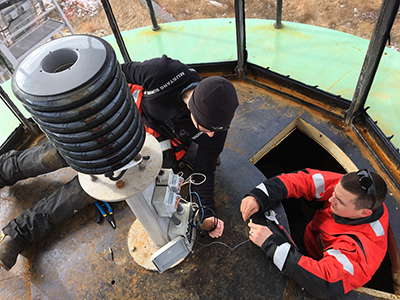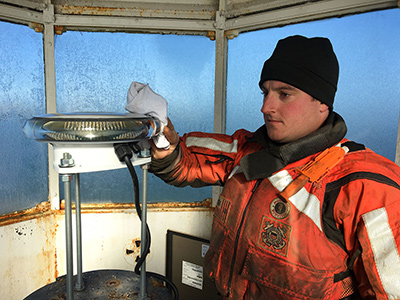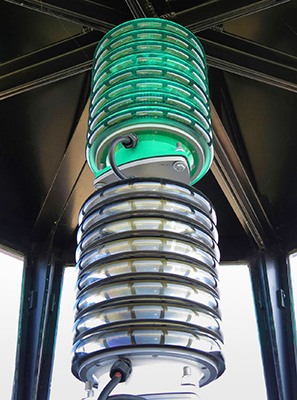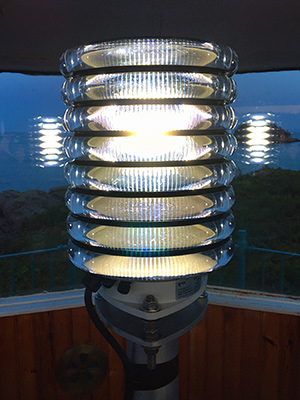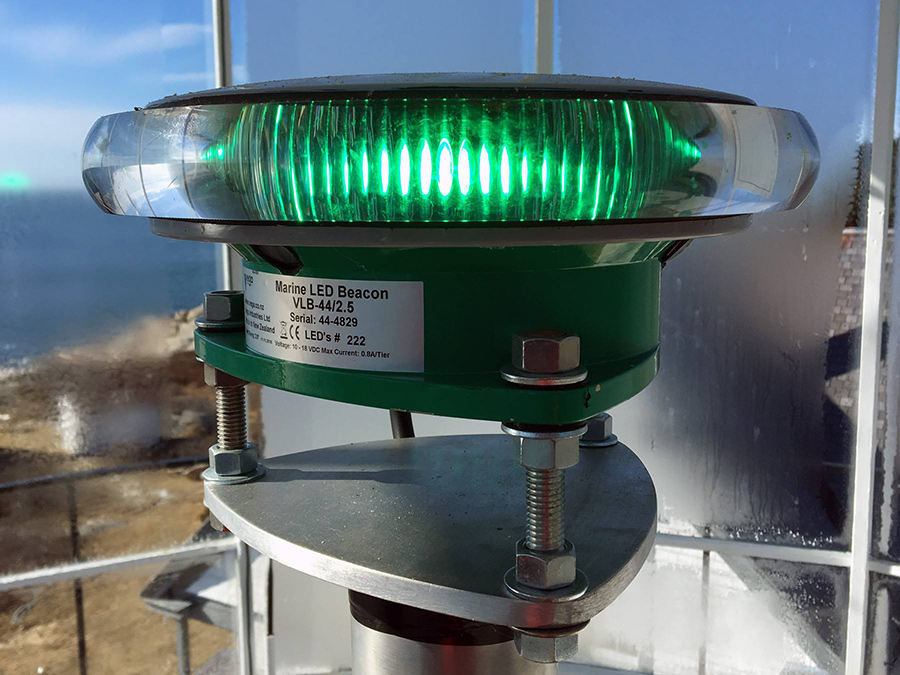LEDs are the New Wave of Beacons for Lighthouses
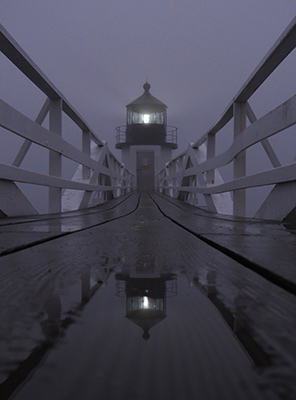
(Bob Trapani, Jr. photo)
Climb to the top of a Maine lighthouse and one is bound to be astounded by the breathtaking beauty of the surrounding seascape. However, as time marches on and a wave of change rolls in with the tide, spectacular views are not the only fascination to behold atop a lighthouse.
In recent years, the United States Coast Guard has slowly been transitioning from outdated legacy optics to the intriguing technology of light emitting diode (LED) beacons. These futuristic-looking lights are nothing short of amazing when it comes to operational efficiency and longevity.
The most common LED found in lighthouses today is a VLB-44 beacon, which has been manufactured by Vega Industries in New Zealand (Vega Industries was sold to Carmanah Technologies / Sabik Marine in 2017). Whether the optic consists of one, two, four or eight tiers, the beacon never fails to pack a brilliant burst of light for guiding mariners to and fro. The installation of LEDs is also substantially reducing the solar footprint at light stations, and in doing so, enhancing the historic integrity of a site and the natural environment that embraces it.
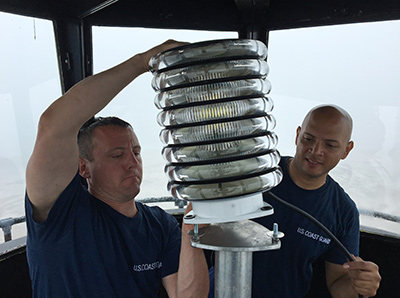
(Bob Trapani, Jr. photo)
If you have never seen one of these new LED beacons in a lighthouse, then your curiosity is sure to be piqued. Children will find the appearance of these 21st century beacons absolutely fascinating. The look of the LED could not be starker in contrast to the legacy beacons that we have grown accustomed to.
Gone are all moving parts that were once a requirement with incandescent beacons. In fact, there are no filament lamps, electronic components such as lampchangers, wiring kits, or flashers to replace. The VLB-44 beacon is completely self-contained, requires nearly no maintenance, and has an amazing life span of ten years.
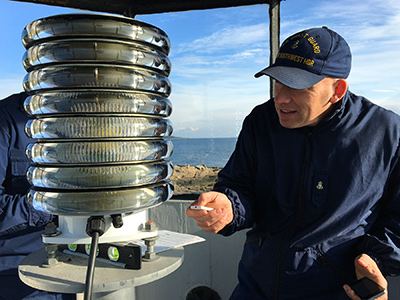
(Bob Trapani, Jr. photo)
For over two centuries the winds of change have blown unrelentingly across the seascape of our lighthouse heritage. Back in 1926, a volume entitled, The Lighthouse Service: Its History, Activities and Organization by George Weiss noted, “A constant effort is made to improve the mechanics of existing aids and to find new and more efficient aids to navigation.”
In the wake of each evolutionary step, change has yielded new advances in light and sound technology that has enabled aging lighthouses to be carried forward into the future through the achievement of greater efficiency and economies.
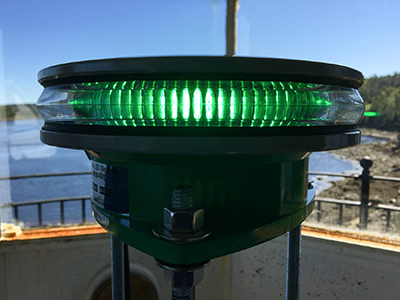
(Bob Trapani, Jr. photo)
In almost prophetic fashion, the November 1930 edition of the Lighthouse Service Bulletin stated, “Not only has the character of aids undergone change, but types of aids entirely unknown previously have been developed and placed in service.” It is safe to say that the scientific development of the LED beacon is thus in keeping with time-honored tradition.
Whether light emitting diode technology is the final frontier in the ongoing history of lighthouses remains to be seen, but one thing is for sure – it is “time to shine” in more ways than one for LEDs – and the present never looked cooler!
